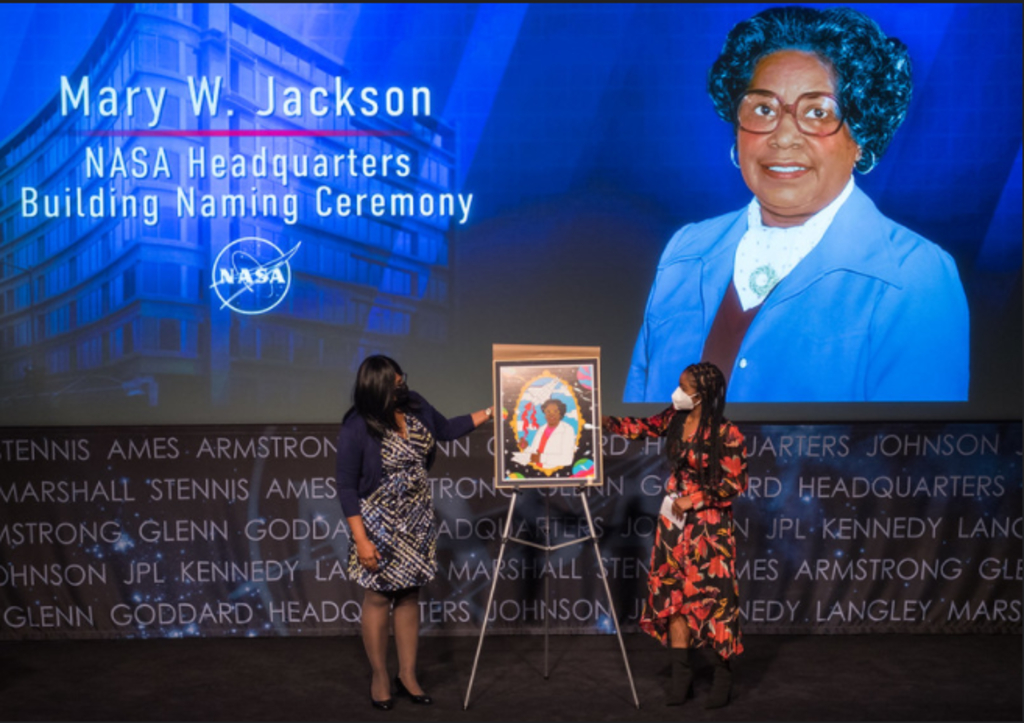NASA’s headquarters in the District has officially received the name of scientist Mary Jackson, the first African American female engineer to serve at the agency.
NASA announced on Friday the renaming in a live streamed ceremony outside the headquarters, where Jackson’s granddaughter, Wanda Jackson, delivered a speech. She called her grandmother, who died in 2005, a “loving, caring and feisty woman.”
“Jackson’s story is one of incredible determination. She personified NASA’s spirit of persevering against all odds, provided inspiration advancing science and exploration,” said acting NASA Administrator Steve Jurczyk at the ceremony.
Led by Jurczyk, the event also welcomed NASA Langley center director Clayton Turner, retired NASA engineer Christine Darden, and artist Tenbeete Solomon, also known as Trap Bob.
The Mary W. Jackson NASA Headquarters sign is unveiled by her grandson Bryan Jackson, left, and son-in-law Raymond Lewis, right, during the naming ceremony this afternoon. More pictures from the ceremony ➡️ https://t.co/GLb2g5iOkf pic.twitter.com/PXgNfGFP73
— NASA HQ PHOTO (@nasahqphoto) February 26, 2021
Jackson’s career as a mathematician and aerospace engineer started in the segregated West Area Computing Unit of NASA’s Langley Research Center in Hampton, Virginia.
She led programs influencing the hiring and promotion of women in NASA’s science, technology, engineering, and mathematics careers. The scientist received the Congressional Gold Medal in 2019.
Margot Lee Shetterly‘s book Hidden Figures: The American Dream and the Untold Story of the Black Women Mathematicians Who Helped Win the Space Race was inspired by Jackson, along with her colleagues in the West Area Computing Unit in 2016.
The book recounts the true story of the black female mathematicians at NASA behind the first American astronaut put into orbit.
A movie adaptation of Hidden Figures came out the following year, winning many awards, including the Screen Actors Guild Award for Outstanding Performance by a Cast. Jackson was played by award-winning actress Janelle Monáe in the movie.
“Mary Winston Jackson (1921–2005) successfully overcame the barriers of segregation and gender bias to become a professional aerospace engineer and leader in ensuring equal opportunities for future generations,” NASA said in a statement.

